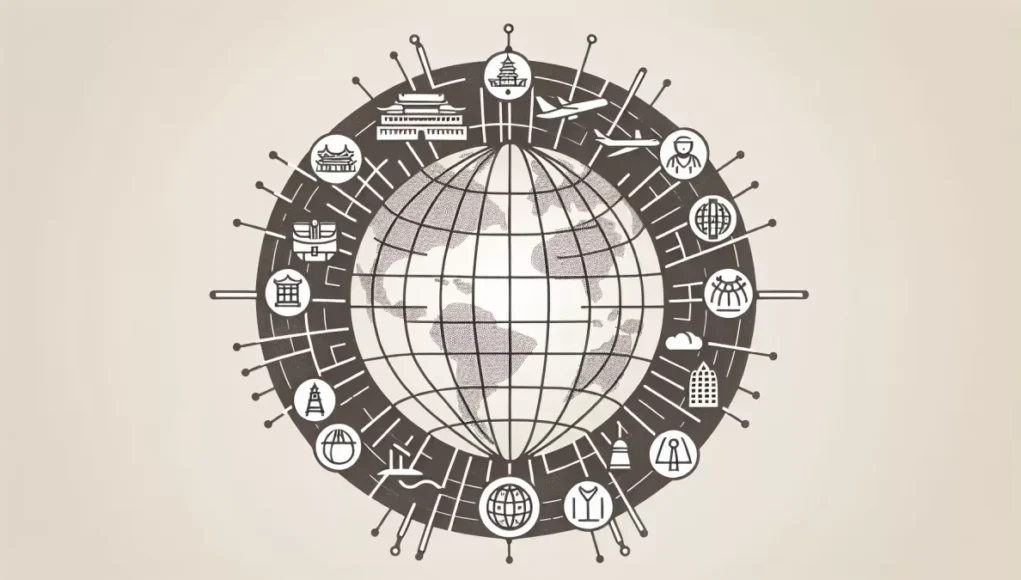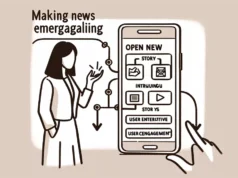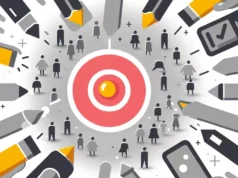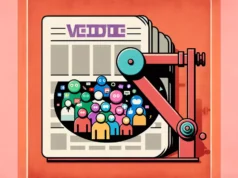In an age of internet advancement and global connectedness, the news landscape is rapidly changing. The manner in which we consume news has undergone a paradigm shift, evolving from a system focused on local or national broadcasts to a widely diversified ecosystem of global information. The looming question for many is, “does this global news landscape bridge the cultural divide, or does it reinforce existing stereotypes and divisions?” Evidence from different parts of the world indicates that, on one hand, there are profound challenges and familiar tropes persisting, but on the other hand, there are also unprecedented opportunities for cultural connections that have never existed before.
In the past, news was predominantly grounded in the regional or national context. The local newspaper, radio, or television had been the primary outlets that catered to individual communities or countries. They delivered news that directly concerned the whereabouts of the public, stimulating a sense of community and shared identity. Yet, these traditional mechanisms were often marred by parochialism, a limited viewpoint, and sometimes, stark biases. Global perspectives were sporadic and often relegated to secondary importance, thereby limiting the scope of understanding and building solid walls of cultural isolation.
Enter the internet and modern technology, and the face of journalism has undergone a complete transformation. The conventional ‘broadcast’ model of journalism, where the news is disseminated to the passive audience, has been disrupted by the ‘network’ model. This democratic process enables anyone with an internet connection to consume or produce news, fostering a more vibrant and diverse news landscape.
The advent of online news platforms like Google News, BBC World, Al Jazeera, and others have opened the doors to a broader range of news and perspectives, fostering a more diverse and inclusive media landscape. Socio-political happenings in Africa can now be understood real-time by a user in Asia, and insights into Latin American culture can be exchanged with an enthusiast based in Europe. Interactions across different cultures, primarily confined to geographic boundaries or academic discussions, now find a dynamic platform on the world wide web.
This blossoming of worldwide information, although inherently beneficial, also comes with complexities. While the global news landscape expands perspectives, it also runs the risk of simplifying cultures and oversimplifying issues into digestible narratives that could inadvertently nourish stereotypes. Global news can fall into the trap of reduced context due to the delivery mechanism hinged on speed and brevity, negatively impacting cross-cultural understanding.
Yet, breakthroughs that bridge cultural divides are clear and noteworthy. Online news has democratized access to information, connecting disparate cultures and facilitating a more comprehensive understanding of global affairs. The prevalence of multilingual news websites breaks language barriers, enabling people from different linguistic backgrounds to acquire insights from a global perspective. Social media platforms, podcasts, and blogs have become potent vehicles of cultural exchange, challenging traditional notions of journalism.
Furthermore, digital journalism has brought to the forefront events and perspectives that were otherwise marginalized or overlooked in traditional media. Underserved populations, indigenous communities, and ‘small story’ regions traditionally outside the news purview benefit from these shifts, garnering global attention and preciously needed support – an unthinkable scenario in the era of conventional journalism.
The new age of journalism presents us with a paradox. On one hand, the global news landscape embodies the potential to bridge cultural divides, engendering a sense of ‘global citizenship’. On the other, it can falter and reinforce stereotypes due to the allure of simplified narratives and rapid reportage. The responsibility, therefore, falls upon us as consumers, and upon the platform creators, to discern, question and participate, steering the narrative towards connection rather than division. As we delve deeper into the 21st century, it is imperative to leverage the power of global journalism in fostering a world that understands and respects the multifaceted nature of diverse cultures.
Sources-
1. “Ethnic Media in the Digital Age,” by Matthew D. Matsaganis, Vikki S. Katz, and Sandra J. Ball-Rokeach, Polity Press, 2011.
2. “The Googlization of Everything: (And Why We Should Worry),” by Siva Vaidhyanathan, University of California Press, 2011.
3. “Comparing Media Systems: Three Models of Media and Politics,” by Daniel C. Hallin and Paolo Mancini, Cambridge University Press, 2004.
4. “The New Global Journalism: Foreign Correspondence in Transition,” by Mary Angela Bock, Routledge, 2018.
5. “The Network Society: Social Aspects of New Media,” by Jan A G M van Dijk, Sage, 2006.
6. “Digital Journalism: Emerging Media and the Changing Horizons of Journalism,” by Kevin Kawamoto, Rowman & Littlefield Publishers, 2003.
7. “Globalization and Media: Global Village of Babel,” by Kai Hafez, Rowman & Littlefield Publishers, 2013.
8. “Online News and the Public,” by David Tewksbury and Jason Rittenberg, Lawrence Erlbaum Associates Publishers, 2002.






